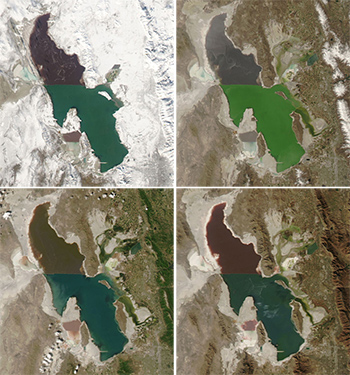Great Salt Lake is not a "dead sea." It is an ecosystem teeming with life, and there's always something interesting going on.
Most people come to the lake to see birds. Each year, more than 250 species of birds visit the Great Salt Lake ecosystem. While they're here, they feed on the lake's plentiful brine shrimp and brine flies, or other invertebrates and fish in the lake's surrounding wetlands and rivers. Birds also use the drier vegetated land that surrounds the lake, where they gather seeds and insects for food. Even the seemingly barren mud flats (or playas) around the lake provide nesting and feeding grounds for birds such as the Snowy Plover.
The greatest diversity and numbers of birds visit during the spring and fall migration seasons. Most birds come to the wetlands, but certain species-especially grebes, phalaropes, avocets, stilts, and gulls-spend most of their time in or near open water.
This guide will help you plan a visit to the lake during any season, and let you know about some interesting things to look for.

Visit the Great Salt Lake from Space page to see how the landscape changes through the year.